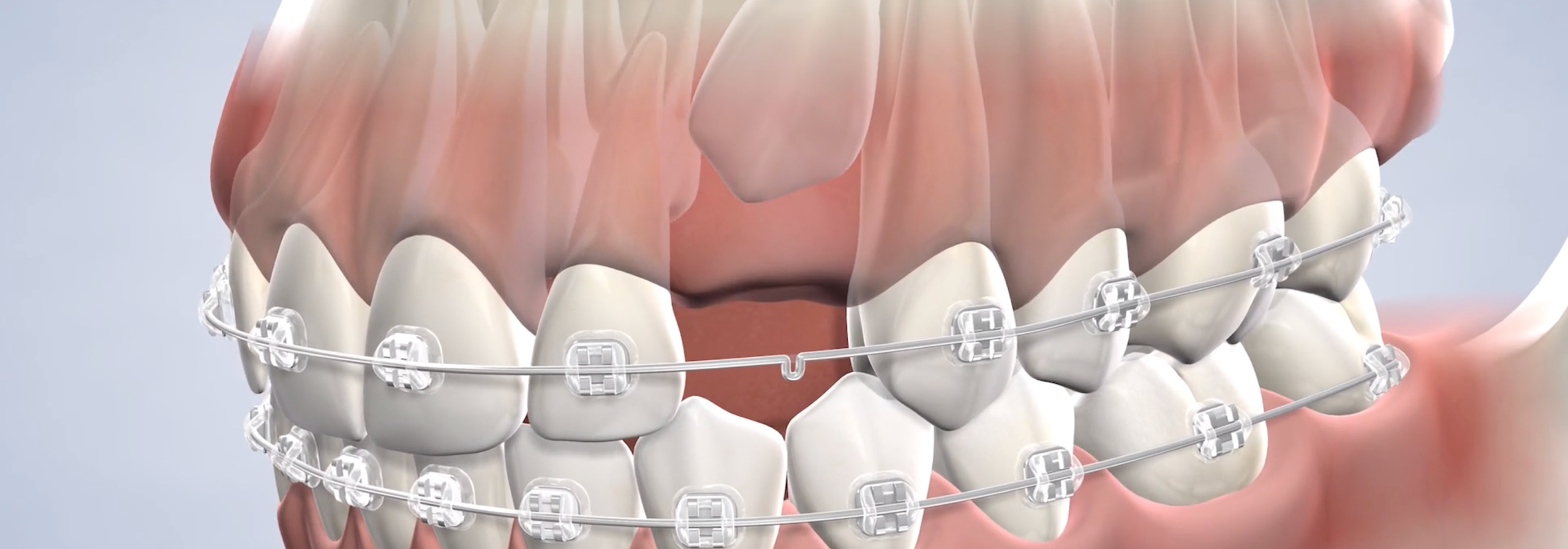Impacted Canines
Ensure Canine Teeth Erupt & Function Properly
All of your teeth play an important role in the health and function of your smile. This is especially true for canine teeth, which have the longest root of any tooth and are responsible for biting and tearing food. If a canine tooth is impacted, or blocked from erupting into the dental arch, it cannot function properly. At Akeso Oral, Facial & Dental Implant Surgery, our oral surgeons manage impacted canine teeth with expose and bond treatment, which is a joint effort between your oral surgeon and your orthodontist. To schedule a consultation with our oral surgeons and receive a custom care plan for you or your child, contact our practice in Columbia, Catonsville, Lutherville, and Westminster, MD, today.
What Causes an Impacted Canine?
Canine teeth, which sit on each side of the incisor teeth at the front of the mouth, are vital for eating and speaking. Their location in the mouth and long shape guides your bite into proper position because they are the first teeth that touch when your jaws close together. When canine teeth fall out or become impacted, it can cause bite problems and make it difficult to eat or speak properly.
A canine tooth can become impacted due to:
- Baby teeth not falling out in time
- A growth blocking the tooth’s path
- Crowded or misaligned teeth blocking the tooth’s path
- Too many teeth in the mouth
- Unusual growths on the soft tissue of the gums
Recognizing and Treating an Impacted Canine Early
Canine teeth are usually the last teeth to erupt and appear around the age of 12 or 13. Detecting an impacted canine tooth early will yield the most optimal outcome because the older a patient gets, the more likely the tooth will not erupt on its own, even if there is room for it in the dental arch. The American Association of Orthodontists recommends that children see an orthodontist for an exam by the age of 7. When an impacted canine tooth is detected, treatment can begin early to erupt and guide the tooth into its proper position.
At Akeso Oral, Facial & Dental Implant Surgery, we can treat impacted canine teeth for children and adults, but the earlier we begin treatment, the higher the chance for successful eruption. By about the age of 40, the impacted tooth will be completely fused in the jaw bone and remain stuck in place, despite all efforts to move it. Treatment at this point will likely involve extracting the tooth and replacing it with a dental implant.
What Happens if an Impacted Canine Tooth Is Left Untreated?
An untreated impacted canine tooth can put pressure on adjacent teeth and nerves, which can cause damage and intense tooth pain. Tooth resorption is a normal process when a permanent tooth replaces a baby tooth, but when a canine tooth is incorrectly positioned, it can resorb the roots of adjacent teeth and leave it unrestorable.
Cysts or tumors can form around an untreated impacted canine tooth. These growths can push other teeth out of alignment or resorb the alveolar bone, preventing normal dental function and possibly leading to tooth decay. Impacted canine teeth can also affect the appearance of your smile and leave some people feeling self-conscious about their teeth. Treating impacted canine teeth will promote better oral health and oral function, as well as improve the aesthetics of your smile.
Impacted Canine Tooth Surgery: The Expose and Bond Procedure
The treatment for an impacted canine tooth is called expose and bond. Your oral surgeon will expose the impacted tooth and your orthodontist will use braces to guide it into its proper position. Prior to the surgical procedure, we will take 3D scans to determine the exact location of the impacted tooth. As oral surgeons, we are qualified to administer all types of anesthesia and we will help you select the right option.
Your surgeon will first extract any baby teeth that are blocking the canine tooth. To surgically expose the impacted tooth, your surgeon will make an incision in the gum tissue and then attach a bracket with a gold chain. This chain is temporarily attached to the arch wire of the braces. Within two weeks after surgery, you will see your orthodontist, who will use rubber bands to start moving the tooth.
Guiding an impacted tooth into alignment is a gradual process that can take up to a year to complete. Wearing braces will also correct other orthodontic problems. Although the total treatment time can seem lengthy, remember that exposing and bonding an impacted canine tooth is ideal and helps avoid tooth extraction as a last resort.
Types of Anesthesia
There are many types of anesthesia and sedation options available to you.
Treatment for Impacted Canines in Columbia, Catonsville, Lutherville, and Westminster, MD
Our team at Akeso Oral, Facial & Dental Implant Surgery makes the oral surgery experience as seamless as possible. The surgery to expose an impacted canine tooth is a straightforward procedure that we can perform in the comfort of our offices in Columbia, Catonsville, Lutherville, and Westminster, MD. If you or your child have an impacted tooth, contact us to schedule a consultation and we will design a custom treatment plan.
Hear From Our Patients
Committed to Patient Care & Clinical Excellence
As a patient at Akeso Oral, Facial & Dental Implant Surgery, you can expect to receive the highest level of care from a team centered around your needs. We proudly serve patients of all ages in the Baltimore-Washington metropolitan areas and invite you to contact us to schedule your appointment.





